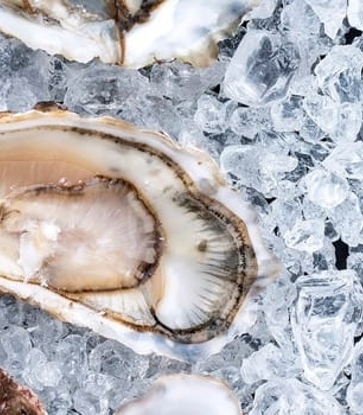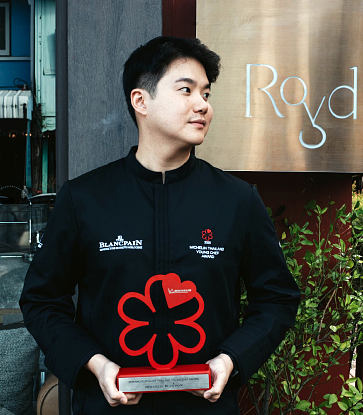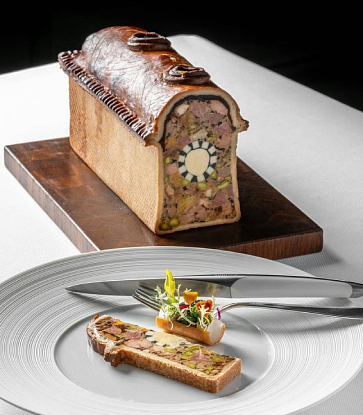In a Southeast Asian country like Thailand, it’s easy to live off the land and lead a healthy lifestyle at the same time. Who needs a love affair with prescription drugs when nature does the healing? Call it folk medicine, traditional healing, or adopting a preventative diet – whatever you want to call it – but it’s no secret that tropical fruit and vegetables are an equally delicious way to enjoy nature’s bounty while taking care of your body at the same time.
Here are some local favourites.
Pennywort (Bai bua bok)
Also known as the Asian Pennywort, these small, rounded leaves are popular with Thais who crave a refreshing and tasty drink and still want to be able to say they “drank healthy”. Rich in vitamins A (good for the eyes), B1 and calcium, the bai bua bok leaves help to soothe allergies, internal bruising, urinary ailments and lower the blood pressure.
As food, the fresh leaves make a great accompaniment to dishes like laab or naam prik (chilli dip). They grow very easily at home and require minimal attention.

Gac Fruit (Fak Khao)
Known in Thai as fak khao, the gac fruit’s unique appearance usually draws intrepid foodies to try it out. Anyone who’s had a sip of gac fruit juice will agree, though, that it’s more than just a pretty (and prickly) face.
Harvested during the months of December and January, the fruit boasts numerous health benefits. It’s also high in beta-carotene and lycopene concentration – even more so than carrots or sweet potatoes. Studies also show that the fruit stops the growth of certain tumour cells. It’s far from being a cure for cancer for now, but it almost certainly helps to reduce the risk of some types of cancer. We’ll drink to that.

Ivy Gourd Leaves (Bai Tamleung)
Ask any Thai kid what their mother made for them when they were feeling under the weather and tom jued tamleung (young ivy gourd leaves in clear broth) would top the list. Like many herbs, spices, fruit and vegetables, the list of benefits of this perennial climber is endless. In the kitchen, the leaves, fruit and roots are consumed and are considered a good source of protein, calcium, fibre and beta-carotene. In some households, the leaves are also applied directly to the skin to heal minor wounds.

Roselle (Dok Krajiab)
In a tropical country like Thailand, a refreshing drink like the roselle (Hibiscus sabdariffa) drink or naam krajiab always goes down well with the locals. Refreshing and very easy to make at home, the roselle - the dried-up flower buds – are high in vitamin C and iron – and sometimes also used as a diuretic and mild laxative. Don’t be surprised to see Thais enjoying this as an everyday beverage alongside meals since they’re the prefect thirst-quencher and cool-aid on a scorching day!

Bengal currant (Mamuang Hao Manao Ho)
Although not easily found at local markets, this sour fruit stands out for its magenta colour and is a good source of potassium, vitamins C and A. While they’re usually enjoyed as a cold beverage on a hot day or eaten raw by others, pregnant women should avoid them altogether.

Bitter Gourd (Mara Kee Nok)
The Thai saying ‘Wan Pen Lom Kom Pen Ya’ (sweetness is air, bitterness is medicine) is the embodiment of this vegetable. The bitter gourd may not be the most attractive garden vegetable, but it’s definitely packed with medicinal goodness.
The gourd is enjoyed at the dinner table, either stir-fried with krill paste (kapi) or eggs and enjoyed as a side dish with chilli paste dip. Among some of the benefits are building the immune system, reducing blood pressure and playing a part in reducing cholesterol and triglycerides.

Pomegranate (Tubtim)
Pomegranate – known as tubtim by Thais or “ruby” – these gorgeous red “jewels” are rich in vitamins A, B and C and minerals such as calcium, potassium, iron and fibre. The seeds contain three times the amount of anti-oxidants than that of red wine and green tea. Not only do they make a refreshing cold beverage, they’re also good for the health. What a gem!

Disclaimer: This is not a complete list of all the fruit and vegetables with medicinal benefits available in Thailand. Those with allergies should check with their doctor first to see if items on this list will have a negative impact on their health.


















